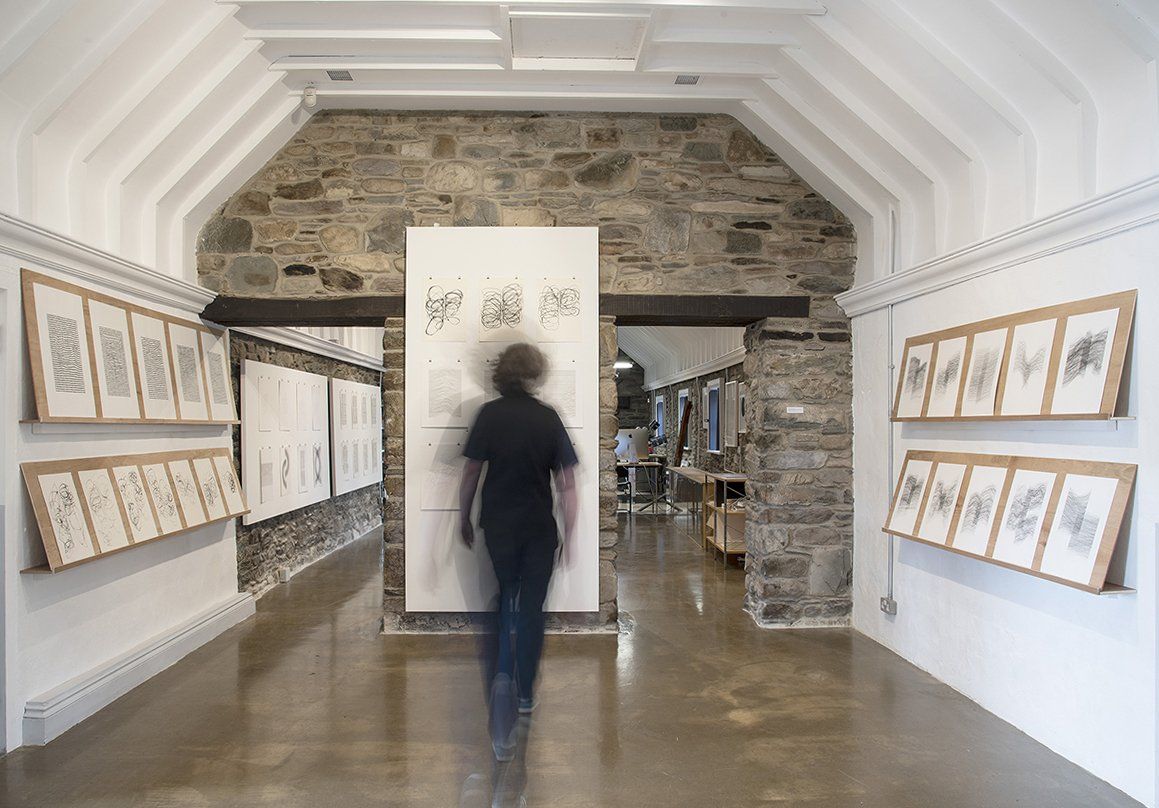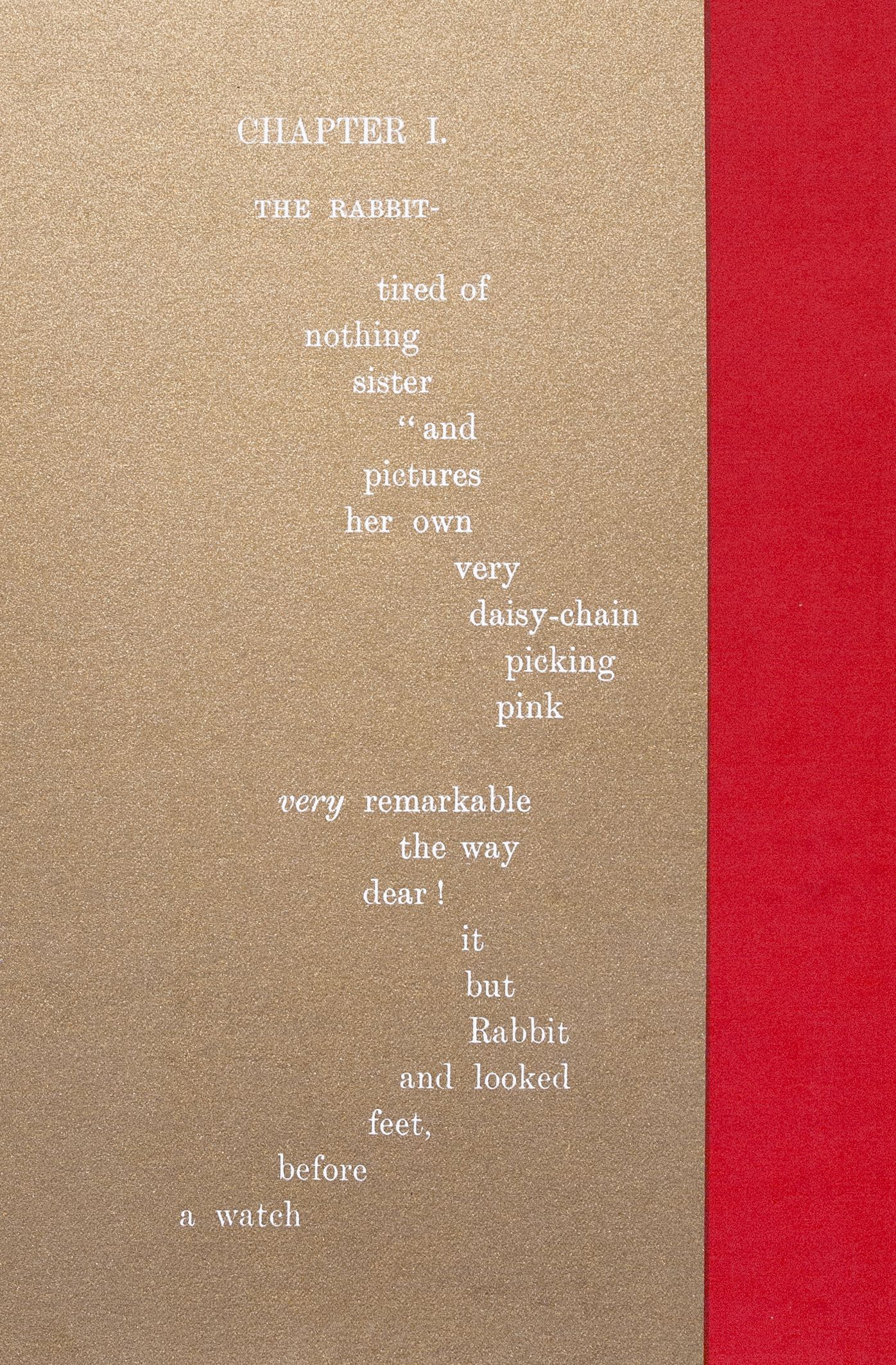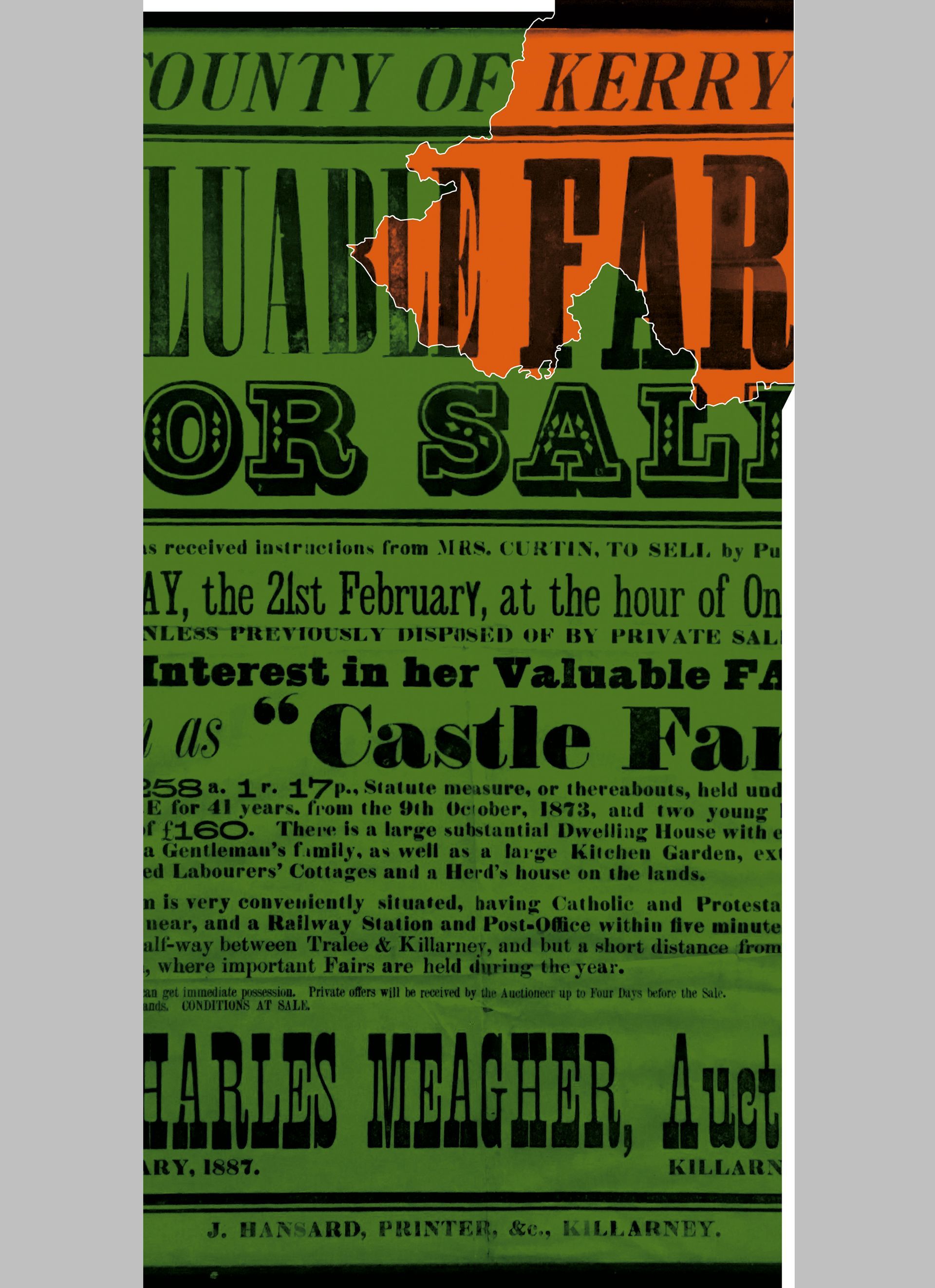
Grilse Gallery
The gallery primarily exhibits contemporary prints and drawings, as well as photographic and digital media, moving image and sound works. Between shows, owners Lucy and Robert Carter are screen printing and hanging their own work. See our YouTube channel for recordings of opening talks and audio descriptions: https://www.youtube.com/channel/UCi3NHutR7DVVYnQVLdDEV0Q
Prints and drawings
Since the invention of paper, collections of drawings and prints have brought together hand-drawn originals with mechanical reproductions such as wood blocks, engravings and etchings. Today the concept has expanded to include photographic and digital media, including moving image and sound works.
Prints and drawings represent a huge range of media across the spectrum of graphic arts and techniques. For the art lover prints and drawings represent a body of accessible, affordable art.

Installation view of our inaugural exhibition, Charles Tyrrell's
Between the Lines, 100 drawings. Photographs above by Con Kelleher; below, by Lucia Capellaro

Lucy and Robert
Under the studio name of Lucy or Robert, 20 years of collaborations with artists, architects, curators and museums in the UK have encouraged Robert and Lucy to establish a screen printing studio and gallery.
As printmakers, we are fascinated by typologies, codes and symbols: current preoccupations include the geometry and heraldry of racing silks, the 1928 Irish Free state coin designs championed by W B Yeats, maps and borders, especially that between the Irish Republic and Northern Ireland, and contemporary poetry.
Lucy and Robert studied information design at Central St Martins and Harrow School of Art respectively, and having specialised in graphic design for museums in London for some years they moved to Bruton, Somerset, before relocating to Ireland.
Screenprinting
Screenprinting, silkscreen printing, or serigraphy, are terms for an ancient process originally developed in China, then popularised in the West during the 1960s by Corita Kent and Andy Warhol in America and Patrick Scott in 70s Ireland. Layers of intense flat colour are squeezed through stencils held on a fine mesh and the overlays of water-based ink allow for subtleties both controlled and coincidental. The process can be crudely summarised:
1 Prepare a stencil, using cut paper, ink or crayon on tracing paper, or a computer drawing printed on clear acetate—up to 2 hrs
2 Degrease a clean screen—5 mins
3 Dry in warming drawer—40 mins
4 Apply emulsion to screen—10 mins
5 Dry in a dark warming drawer—40 mins
6 Wash tools used to apply emulsion—5 mins
7 Expose screen with film positive under uv light—5 mins
8 Wash out exposed screen with water jet —10 mins
9 Dry in warming drawer—40 mins
10 Mix ink to desired colour and add 50% extender—5 mins
11 Trim paper to desired size—10 mins
12 Lock up screen on print table and mask out edges & non-printing areas—15 mins
13 Apply ink to screen and make a test print on acetate—2 mins
14 Position paper under acetate in correct position; define corners with ‘end stops’—5 mins
15 Print!—20 mins depending on size of edition
16 Remove excess ink from screen—2 mins
17 Wash screen thoroughly, wash squeegee and tools; strip stencil—15 mins
18 Dry in warming drawer—40 mins
Repeat all the above for each additional colour.




